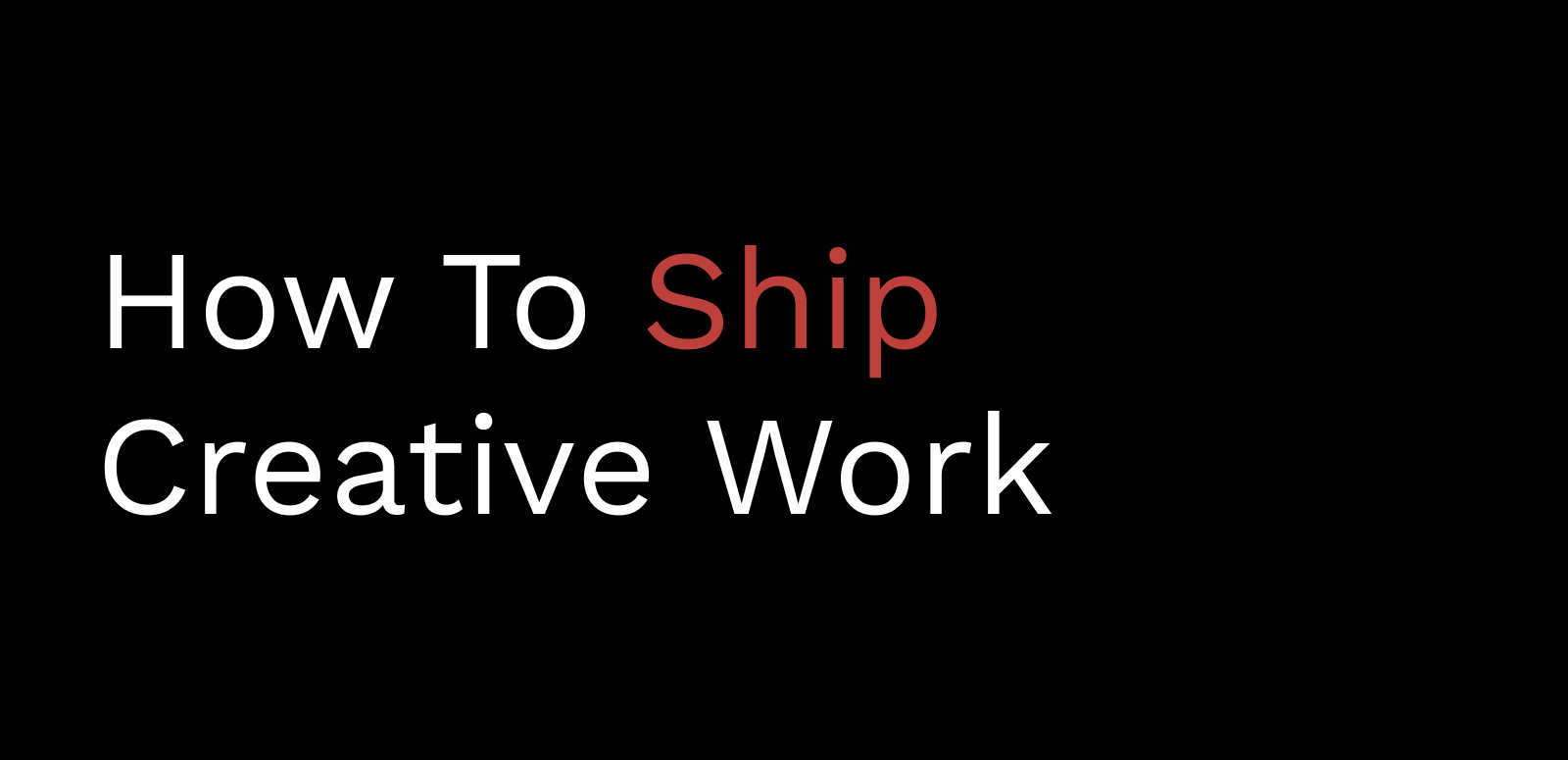I just finished reading The Practice: Shipping Creative Work by Seth Godin.
Seth has been the single biggest influence on my thinking and work over the years so I wasn’t surprised to find a lot of valuable insight in his take on how to develop a successful creative process.
Following are some of my favorite excerpts from the book…
The Bhagavad-Gita says, “It is better to follow your own path, however imperfectly, than to follow someone else’s perfectly.” Consider the people who have found their voice and made a real impact: their paths always differ, but their practices overlap in many ways. (p. 8)
For the important work, the instructions are always insufficient. For the work we’d like to do, the reward comes from the fact that there is no guarantee, that the path isn’t well lit, that we cannot possibly be sure it’s going to work. (p. 15)
As Susan Kare, designer of the original Mac interface, said, “You can’t really decide to paint a masterpiece. You just have to think hard, work hard, and try to make a painting that you care about. Then, if you’re lucky, your work will find an audience for whom it’s meaningful.” (p. 24)
“I am ____ but they just don’t realize it yet” is totally different from “I’m not _____ because they didn’t tell me I was.” (p. 30)
True learning (as opposed to education) is a voluntary experience that requires tension and discomfort (the persistent feeling of incompetence as we get better at a skill). (p. 53)
It might be that the most generous thing to do is to disappoint someone in the short run. (p. 59)
Of my 7,500 blog posts, half of them are below average compared to the others, on any metric you’d care to measure. Popularity, impact, virality, longevity. That’s simple arithmetic. (p. 68)
Enrollment is acknowledgement that we’re on a journey together.
The Tin Man enrolls with Dorothy to go see the Wizard. He has his own agenda. He’s after his own reward, as are the Scarecrow and the Lion. (p. 82)
Art is the human act of doing something that might not work and causing change to happen. (p. 90)
“If the problem can be solved, why worry? And if the problem can’t be solved, then worrying will do you no good.” – Shantideva (p. 99)
We don’t ship the work because we’re creative, we’re creative because we ship the work. (p. 102)
Money is how our society signifies enrollment. The person who has paid for your scarce time and scarce output is more likely to value it, to share it, and to take it seriously. (p. 108)
Finding better clients isn’t easy, partly because we don’t trust ourselves enough to imagine that we deserve them. (p. 112)
Who are you trying to change?
What change are you trying to make?
How will you know if it worked?
Three simple questions, all easily avoided. (p. 120)
How is it possible for three cowboys to herd a thousand cattle?
Easy. They don’t.
They herd ten cattle, and those cattle influence fifty cattle and those cattle influence the rest.
That’s the way every single widespread movement/product/service has changed the world. (p. 123)
It turns out that the believers are tired of being ignored and they’re eager to cheer you on.
But first, you have to walk away from the others. (p. 128)
We have a meeting at 4:00 pm.
Okay, what’s it for?
Well, we always have this meeting…
So, the “what’s-it-for” is: It’s easier to maintain the status quo than to risk not having the meeting. What the meeting is for is making sure that the people who like having the meeting aren’t upset. (p. 143)
The truth: if a reason doesn’t stop everyone, it’s an excuse, not an actual roadblock. (p. 158)
You are not your work. Your work is a series of choices made with generous intent to cause something to happen.
You can always learn to make better choices. (p. 181)
We don’t write because we feel like it.
We feel like it because we write. (p. 182)
This is the story of every good idea, every new project, every pop song, every novel.
There was a bad idea.
And then there was a better one.
If you want to complain that you don’t have any good ideas, please show me all your bad ideas first. (p. 191)
Genre is a box, a set of boundaries, something the creative person can leverage against. The limits of the genre are the place where you can do your idiosyncratic work.
To make change happen, the artist must bend one of those boundaries, one of those edges.
Generic is a trap, but genre is a lever. (p. 200)
If you’re going to over-index for something, you’re simply going to have to under-index for something else. (p. 225)
Our best commercial work reminds people of what they’ve seen before.
Creativity doesn’t repeat itself, but it rhymes. (p. 231)
Art solves problems in a novel way, and problems always have constraints. (p. 240)
Consider that during its heyday, PBS TV had Julia Child, Mr. Rogers, Bob Ross, and Sesame Street. The budget for all four iconic shows wouldn’t even pay for one show on a major network.
Finding the constraints and embracing them is a common thread in successful creative work. (p.241)
Your work is never going to be good enough (for everyone).
But it’s already good enough (for someone). (p. 246)
You made it to the beginning.
What happens now? (p. 255)
If you dug the above excerpts, you can get the book here.
You also may enjoy my summaries of Hell Yeah or No: What’s Worth Doing and Positioning: The Battle For Your Mind.
To discover more secrets of successful creators, check out my For The Interested newsletter.
